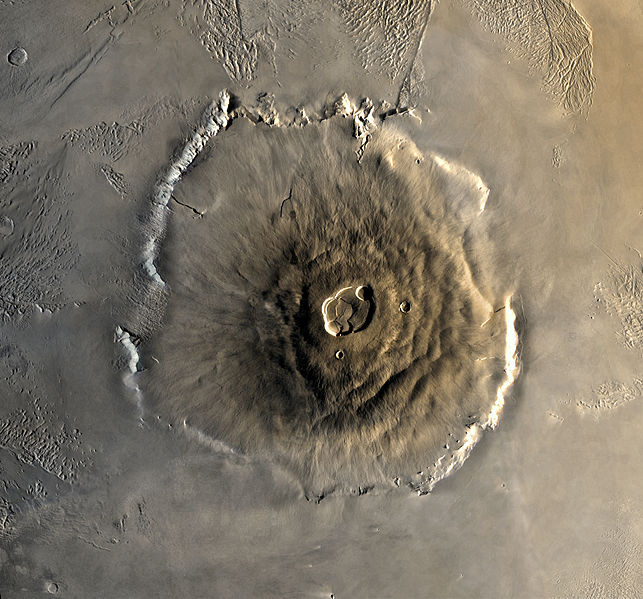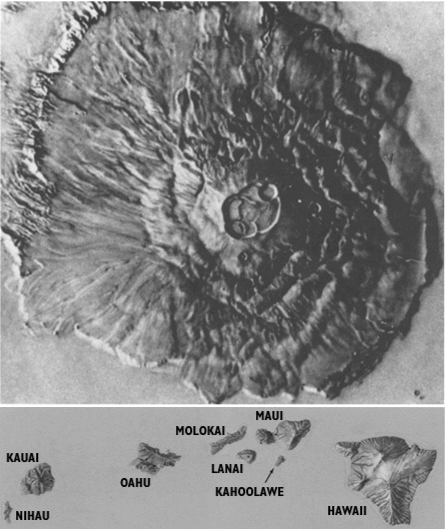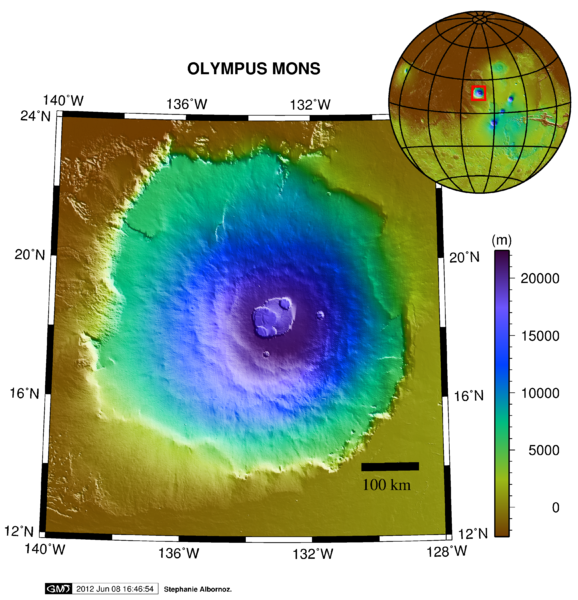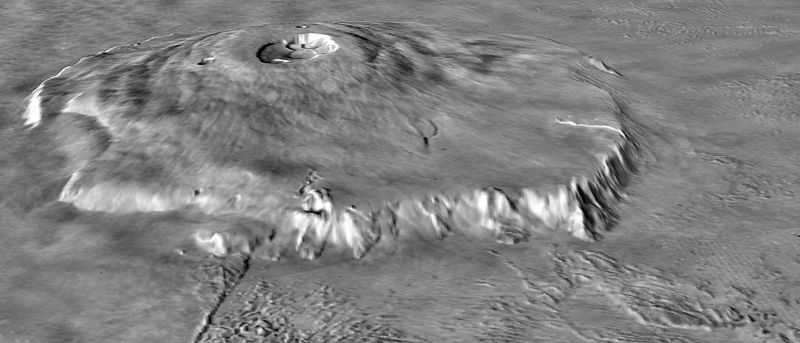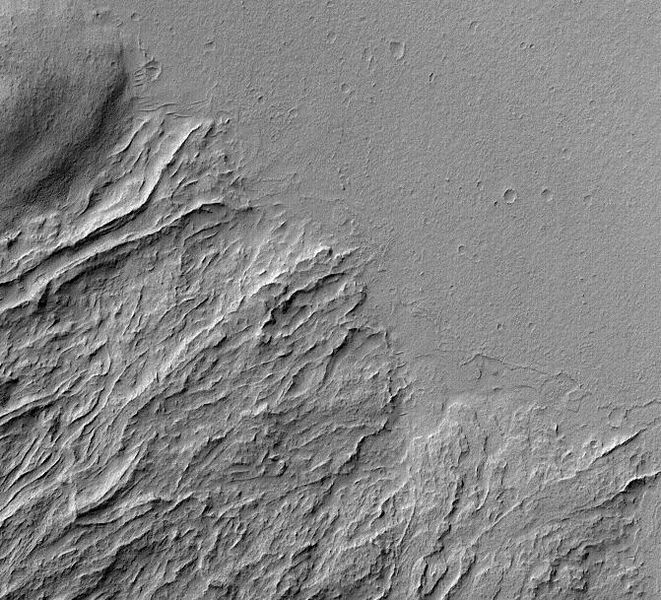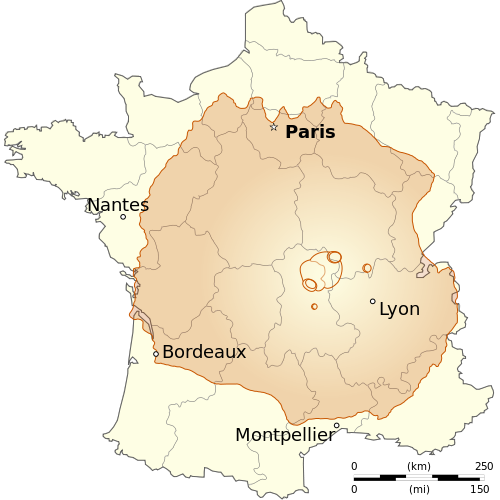Olympus Mons: The Biggest Volcano In The SOLAR SYSTEM
Olympus Mons is a behemoth of a hillock and stands proud on the western hemisphere of Mars’ dusty red surface. It rises 22 km which is three times Everest’s height above sea level. It’s actually one of Mars’ youngest volcanoes and was formed during a phase known as the Amazonian Period which started around 3 million years back. It’s footprint is around the size of Arizona, so it’s a biggy.
Olympus Mons is a ‘shield volcano’ which means that it’s built almost entirely of layer upon layer of lava flow. They’re so called because they tend to be very wide and relatively flat, like a shield laying on the ground. Shield volcanoes have particularly low viscosity of lava so it flows a long way before solidifying, hence the low and flat shape. It’s morphology is actually pretty similar to the massive volcanoes in the Hawaiian islands. Here’s a size comparison:
Olympus Mons had been spotted by Astronomers back in the 19th century, and they suspected it was a big old hill. In the 1800’s astronomers could only detect differences in light and dark on the surface of distant planets, Olympus Mons was one of these so called albedo features. They initially named it Nix Olympica, which means Olympic Snow. They noted that it was one of the few features that could still be seen during Martian dust storms, so correctly assumed it was high.
I wonder if one day someone will climb it? It would be a weird trip because they would have to pass the summit as they landed on the planet then get out of the spacecraft and climb it, then climb back down, then get into the spaceship and fly up past the summit again to get home. You’d be better off just landing on the top I guess. The gravity on Mars is about a third of earths, so it would be a bit easier to do hardcore climbing I suppose. But then you’d be carrying loads of breathing equipment and stuff so I’m not sure.
Also the atmosphere’s density is a lot lower than earth so that would help. On Olympus Mons it is just 0.03 kPa compared to earth’s average at sea level of 100 kPa. So I’m assuming that would make a difference too. There’s too many variables. Who knows. This picture shows a close up of lava flow at the base of Olympus Mons:
I’m fairly sure it will remain un-climbed for quite some time, I mean, even if they do that mental Big Brother on Mars style program I doubt they’ll have them hiking up massive volcanoes. The sad thing is, if you actually did stand near the summit of Olympus Mons you wouldn’t even know you were on a high mountain. It’s sides are so shallow and the curvature of the planet so swift that the bottom of the mountain would be beyond the horizon, just 3 Km away. Weird huh?
Here it is compared to the size of France;
Quite an impressive beast. If you would like to see a video of a volcano on earth blowing smoke rings click on the link below:

